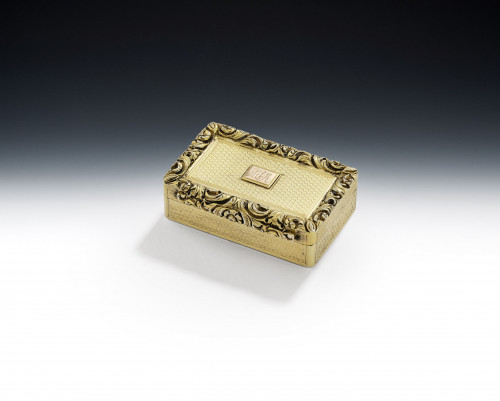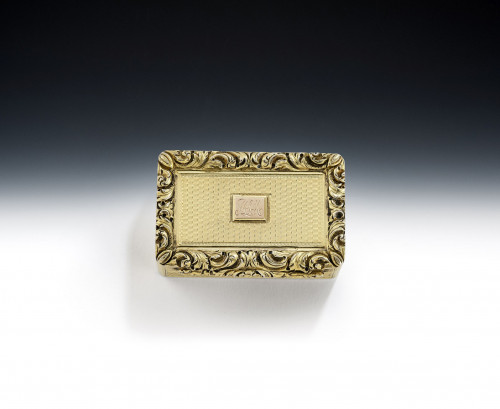- Home
- British Silver 1760-1830
- The Halswell House Salver. An exceptional, and very rare, George II Rococo Salver made in London in 1740 by John Neville & Ann Craig.
The Halswell House Salver. An exceptional, and very rare, George II Rococo Salver made in London in 1740 by John Neville & Ann Craig.
The Halswell House Salver. An exceptional, and very rare, George II Rococo Salver made in London in 1740 by John Neville & Ann Craig.
375110
This wonderful Salver stands on four hoof feet and the raised outer rim is beautifully shaped in a design seldom seen. The main body of this piece is beautifully chased with a wide outer band including scrolls, raying Rococo shells, flower heads and fruit, all executed to the finest standard. The centre is finely engraved with a contemporary Armorial, surrounded by a Rococo pluming scroll, shell and foliate spray cartouche. The Salver is in excellent condition and is fully marked on the reverse, including two good maker's marks.
The Armorial is that as used by Sir Charles Kemeys Tynte, 5th Baronet of Halswell House (shown), County Somerset and Keven Mably, County Glamorgan. The Arms of Busby are in pretence for his wife Anne, daughter and heiress of the Reverend Dr Busby, Rector of Addington County Bucks, whom he married in 1737/38. He succeeded to the Keven Mably estates on the death of his uncle in 1735, the representative of this ancient family, and inherited considerable estates from him in the counties of Glamorgan, Brecon and Monmouthshire. In 1740 he also succeeded his brother to the Tynte baronetcy and to Halswell House in Somerset. The Salver was most probably made to celebrate his succession. Between 1745 and 1785, Tynte considerably improved the gardens creating Halswell Park. He represented the county of Somerset in Parliament seven times and was colonel of the 2nd battalion of the Somerset militia. He died without issue in 1785 and his great estates were invested in his niece , Jane Hassel, who married Colonel Johnstone, Groom of the Bedchamber and Master of the Household to the Prince of Wales. They adopted the surname of Kemeys Tynte and left an only son. On the death of Jane in 1825, he succeeded to all of the estates. A painting of Sir Charles Kemeys Tynte, 5th Baronet, by Thomas Frye, is shown in the image stream.
The work of John Neville and Ann Craig is exceptionally rare and is represnted in most of the important museum collections around the World. Their first mark, in partnership, was registered on 15th October, 1740, therefore this represents a rare early example of their work. Their workshops were located on the corner of Norris Street, St James's. Their partnership was dissolved in 1745, most probably due to Ann's death or retirement. A.G. Grimwade in his work, "London Goldsmith's 1697-1837 - Their Marks and Lives", states that the quality of craftsmanship and design, in the Rococo taste, is of a high standard, although their work is rare to find.
Height: 1.45 inches.
Diameter: 10.6 inches.
Weght: 23oz.
Thank you for your enquiry.
We will get back to you soon.
Please create wishlist to add this item to
RELATED ITEMS




























